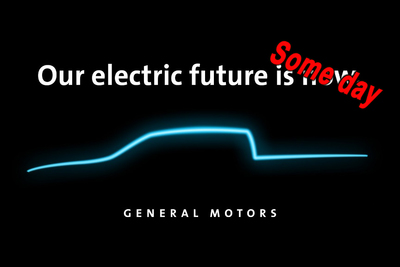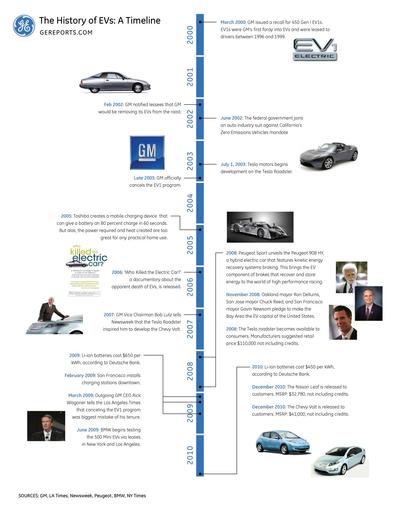GM’s Mary Barra Now Sees U.S. Transition to Electric Cars Taking Decades - Walk back: Well Maybe Not
• SEE ALSO: Electric Vehicles Solution Or Diversion?
DETROIT - June 10, 2020: David Welch writing for Bloomberg TV reported that General Motors Chief Executive Officer Mary Barra said that she expects it will take decades for electric vehicles to take over as the dominant form of transportation but sees driverless cars on the road within five years.
Chief Executive Officer Mary Barra said American drivers will go electric, but it will take a long time for most of the 250 million vehicles on U.S. roads to be battery powered.
“We believe the transition will happen over time,” Barra said on “Leadership Live With David Rubenstein” on Bloomberg Television. When asked if all cars will be electric in 20 years, she said that may be too soon. “It will happen in a little bit longer period, but it will happen.”
See Complete Bloomberg TV Report HERE
Detroit-Hamtramck to be GM’s First Assembly Plant 100 Percent Devoted to Electric Vehicles
Mon, January 27, 2020
$2.2 billion investment will support 2,200 good-paying manufacturing jobs
DETROIT — General Motors’ (NYSE: GM) vision of an all-electric future is coming into clearer focus and gaining momentum with a $2.2 billion investment at its Detroit- Hamtramck assembly plant to produce a variety of all-electric trucks and SUVs. GM’s first all-electric truck will be a pickup with production scheduled to begin in late 2021. This will be followed soon after by the Cruise Origin, a shared, electric, self-driving vehicle unveiled by Cruise in San Francisco last week. Detroit-Hamtramck will be GM’s first fully-dedicated electric vehicle assembly plant.
“Through this investment, GM is taking a big step forward in making our vision of an all-electric future a reality,” said Mark Reuss, GM president, during a press event at the plant with Michigan Gov. Gretchen Whitmer and other local and state officials. “Our electric pickup will be the first of multiple electric truck variants we will build at Detroit-Hamtramck over the next few years.”
When the plant is fully operational, this investment will create more than 2,200 good-paying U.S. manufacturing jobs.
GM will also invest an additional $800 million in supplier tooling and other projects related to the launch of the new electric trucks.
Since the fall of 2018, GM has committed to invest more than $2.5 billion in Michigan to bring electric vehicles to market through investments at Orion assembly, GM battery lab in Warren, Brownstown and today’s announced direct investment in Detroit-Hamtramck.
The plant’s paint and body shops and general assembly area will receive comprehensive upgrades, including new machines, conveyors, controls and tooling.
GM’s joint venture with LG Chem – which is investing $2.3 billion to manufacture battery cells in Lordstown, Ohio – will supply battery cells for the electric vehicles manufactured at Detroit-Hamtramck.
A key driver behind GM’s decision to make the commitment to Detroit-Hamtramck was the support this project received from the state of Michigan.
“The support from the state of Michigan was a key element in making this investment possible,” added Reuss. “This investment helps ensure that Michigan will remain at the epicenter of the global automotive industry as we continue our journey to an electrified future.”
Detroit-Hamtramck currently operates on one shift of production and builds the Cadillac CT6 and the Chevrolet Impala. Approximately 900 people are employed at the plant. As previously confirmed, the plant will be idled for several months beginning at the end of February as the renovations begin.
The plant has built more than 4 million vehicles since opening in 1985. Hourly employees at Detroit-Hamtramck are represented by UAW Local 22.
Meanwhile, here's the reality:
Ethanol is the SAVIOR of the Oil Industry, Convenience Store Industry, Automotive Supply Chain Industry and Much More!
Editors Note : The following is and excerpt from the June 16 virtual APA presentation in Detroit. The main subject of this excerpt is GM's EV information.
Mary Barra At Detroit APA
Operator: The next question will come from the line of Kalea Hall with Detroit News.
Kalea Hall: Hi there. It’s actually Kalea Hall, but that’s OK. Just a question. I’m wondering if it’s going to be any other cost-cutting measures the G.M. plans to take this year. And then a part of that, given your expensive E.V./A.V. plants, what happens to some of the ICE plants as you continue to grow your E.V. lineup? Are we going to see some of those transition, possibly close up or too soon to say?
Mary Barra: I think, first of all, I don’t see any further need for reductions. I am really proud of the team of the great work they did as the virus started to unfold across the globe, people took the appropriate cost cutting actions, kind of a zero-based approach. And so, I think we’re on a good path now with what we accomplished and built-on from November of ‘18.
And I really think EVs as something that’s accretive for the company and that we’ll allow us to grow. If you think about General Motors, we’re very strong in the middle of the country. Our share isn’t as strong on the coasts. We see that’s where EVs are having the most success.
And so, we think that EVs gives us a chance to continue with strong sales from an internal combustion engine perspective across our brands and then very additive with the E.V. vehicles that we’re excited to get into the public and to able to provide. So, we see it as a growth opportunity.
Kalea Hall: Thank you so much, Mary.
Jeff Gilbert: OK, operator, next question.
Operator: The next question is from Phil LeBeau.
Phil LeBeau:Thanks, Mary, I appreciate you taking the time. So, two quick things for you. One, let me pick up on that last question about EVs, if you will. Last week, you cautioned that it could take quite some time for EVs to really gain a significant share in the United States. I wonder if you’d go a little bit further on your sense of rollout and how that might be changing the pace at which you would like to have the whole transition occurring inside of General Motors.
And the second thing, there was a study that came out about a week ago from AlixPartners, which talked about the industry facing the threat of a – as they termed it, a profit desert, and that’s across the board. So, I wonder if you can talk about the challenges that that will face because at a time when the automakers are really under a lot of pressure, running up a lot of debt, that could be a serious problem.
Mary Barra: Sure. Well, Phil, first of all, I’m so excited that you asked the question about the E.V. transition because it was not – it really didn’t represent what I was trying to convey. We’re very positive on electric vehicles and the transformation, and our goal is to provide EVs that really our customers are delighted to buy and are not buying because of the regulatory pressures that OEMs will face to sell EVs, but because customers look at it and say, “The car – the vehicle is beautiful, it’s the segment I want, it has the right range, there’s a robust charging infrastructure that we’re working on.” And it’s a value for me and drives profitability for the – for the company. My point was when you look at the fact that there’s 250 million vehicles on the road, the question was more phrased of when will it all be EVs, and that’s what I was referring to.
But we’re – we are very excited with the portfolio of EVs that we have coming and we want to drive the growth in EVs over the next decade, within the next few years starting – continuing with what we’re building on with the Bolt E.V., with the – with the Hummer, with the Cadillac's and more that we haven’t even shared yet. So, I’m very optimistic that we can see E.V. growth. But if you look at the whole portfolio changing over when you look at the fact that the average age of vehicles is 11.4 years on the road right now, that tail will be a bit longer, but we couldn’t be more excited about EVs and we are – we believe in an all electric future and we’re moving aggressively to have vehicles that people want.
And on your second question that – regarding the AlixPartners report, I think every – all OEMs are different. I think if you look at the disciplined steps General Motors has been taking over the last several years to strengthen our business and the steps we took to protect it, we are – we are going to continue on that path and I think we have a strong future ahead and I don’t see that desert.
Phil LeBeau: Thank you very much, Mary. Jeff Gilbert: OK. Before we go to the next question, if I can jump in with a follow-up on EVs. Has the shutdown affected any of the timing of the renovation of the Detroit-Hamtramck plant? I know that is a very big project than I would imagine. Some work had to stop for a while. Has there been any impact on that?
Mary Barra: Actually, I had been just so impressed with how the team has been able to continue to meet all of our deliverables on the development process that we have for these vehicles. So, no, they are right on track. We’re reviewing them on a regular basis. Hats off to the team, so they’re on track and, of course, I’m always pushing them of, “Can you go faster?”




